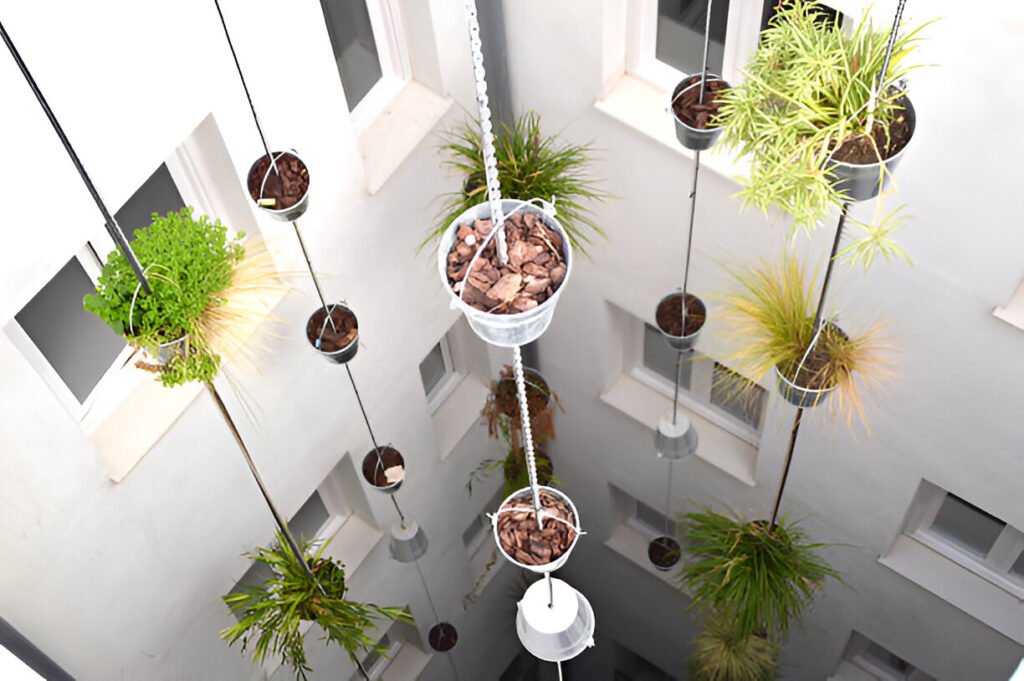Are you tired of the same old gardening routine? Do you feel like you’re out of space for your beloved plants? If so, it might be time to consider a trend that’s taking the gardening world by storm: vertical gardening. This innovative approach allows you to grow your favorite plants without needing a sprawling backyard or garden plot. Think of it as taking your garden upwards rather than spreading it outwards—much like how a skyscraper rises against the skyline. With the right ideas, you can transform your walls, balconies, or even fences into lush, green spaces. Let’s dive into the wonderful world of vertical gardening!

What is Vertical Gardening?
Vertical gardening is the art of growing plants upward rather than outward. By using structures such as walls, trellises, or specially designed planters, you can maximize your growing space, even in the tiniest of apartments. It’s a fantastic solution for city dwellers or anyone with limited outdoor space.
Benefits of Vertical Gardening
Vertical gardening isn’t just about saving space; it offers numerous benefits:
- Space-Saving: Ideal for small areas, allowing you to create a mini-garden.
- Aesthetic Appeal: Vertical gardens add a unique visual element to your space, turning walls into vibrant living art.
- Improved Air Quality: Plants can filter pollutants, enhancing the air quality in your home or office.
- Microclimate Creation: Vertical gardens can create a cooler environment, reducing the need for air conditioning.
Choosing the Right Plants
Selecting the right plants is crucial for a thriving vertical garden. Some plants are more suitable for vertical gardening than others. Herbs like basil and mint, vining plants such as cucumbers and tomatoes, and ornamental plants like ferns and succulents are excellent choices. Consider the sunlight and water requirements of each plant to ensure they flourish in your specific environment.
Types of Vertical Gardens
There are several types of vertical gardens, each with its unique style and requirements:
- Living Walls: These are often professionally installed, creating a lush vertical landscape.
- Green Fences: A practical solution for enhancing privacy while growing climbing plants.
- Pocket Gardens: Small pockets in a wall or fence to hold soil and plants.
DIY Vertical Garden Ideas
Want to get your hands dirty? Here are some DIY ideas to get started with vertical gardening:
- Recycled Materials: Use old pallets, wooden crates, or even shoe organizers to create your garden.
- Bottles and Cans: Repurpose plastic bottles or tin cans by hanging them on walls for an eco-friendly garden.
Using Wall Planters
Wall planters are an excellent choice for adding greenery to flat surfaces. You can buy ready-made planters or create your own using materials like fabric or wood. Just ensure they have proper drainage to keep your plants healthy!
Hanging Gardens
Hanging gardens can be both decorative and functional. Use hooks or shelves to suspend your plants from ceilings or walls. This method adds depth to your space and makes for an eye-catching display.
Pallet Gardens: A Creative Touch
Pallets are an affordable and versatile option for vertical gardening. They can be leaned against walls or hung up. Fill the slats with soil and your chosen plants, and watch them thrive!
Vertical Hydroponics: Soilless Gardening
For those looking for a more modern approach, vertical hydroponics allows you to grow plants without soil. This method uses nutrient-rich water, promoting faster growth and saving space.
Maintaining Your Vertical Garden
Regular maintenance is vital to keeping your vertical garden healthy:
- Watering: Ensure your plants receive enough water, but be cautious of overwatering.
- Pruning: Regularly prune your plants to encourage healthy growth and maintain their shape.
- Fertilizing: Use appropriate fertilizers to boost plant health and yield.
Common Mistakes to Avoid
Even seasoned gardeners can make mistakes. Here are a few to watch out for:
- Overcrowding: Give your plants enough space to grow.
- Ignoring Sunlight Needs: Ensure your plants get the right amount of sunlight for their growth.
- Neglecting Drainage: Proper drainage is essential to prevent root rot.
How to Incorporate Vertical Gardens Indoors
Bringing nature indoors can be incredibly rewarding. Consider setting up vertical gardens in your kitchen for fresh herbs or in your living room for aesthetic appeal. Use wall-mounted planters or shelves to create a stunning indoor garden.
Outdoor Vertical Garden Inspiration
If you have outdoor space, think about creating a vertical garden on your patio or balcony. You could use a trellis for climbing plants or hang pots along the railing for a lively look.
Choosing the Right Location
The success of your vertical garden hinges on its location. Ensure it receives adequate sunlight, and consider using a wall that can protect your plants from harsh weather conditions.
